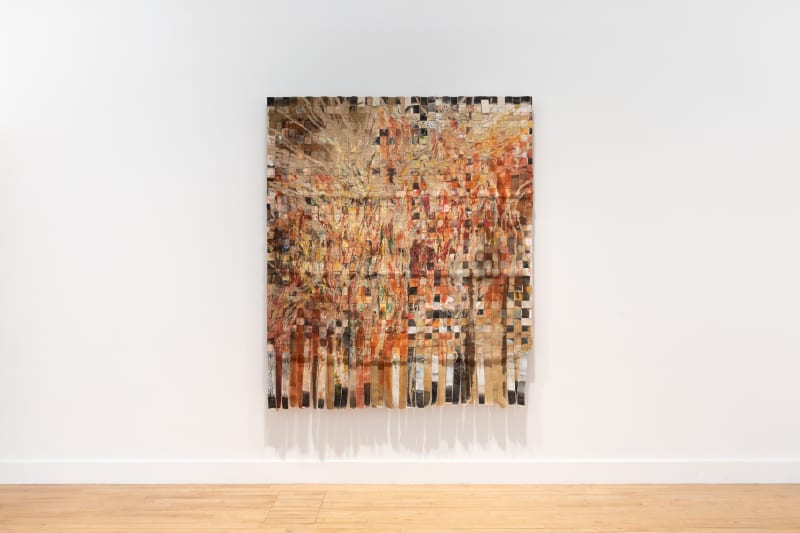Private View: Thursday 12 September 6.30 - 8.30pm
Cooke Latham Gallery present a group exhibition that delves into botany and its influence within contemporary art. It looks at the quiet politics of plants and the ways in which they have become the muse for many an artist, escaping the traditional still life remit, and becoming instead a filter for contemporary political discourse. In an epoch of environmental crisis and social upheaval the taxonomy, tenacity and tangled history of plants provides rich terrain for artistic thought.
Exhibited artists:
Julia Bennett
Blanca Gracia
Coral Harding
Melania Toma
Rafał Zajko
Julia Bennett views her work as an act of ritual. Using natural pigments in conjunction with clay and oil paint she weaves old and new paintings together to create a layered paean to the land and plants that inspire her. A literal bandaging of pigment and time she describes these pixilated canvases as acts of ‘remediation’, a way of reflecting upon the colonised and consumed earth we inhabit and offering a moment of healing.
Melania Toma’s vibrant canvases also weave paint albeit in a less literal sense. Her paintings have evolved from giant tufted and sewn ‘organic’ sculptures and this genesis in materiality is reflected in her current canvases, where thread-like mark making is juxtaposed with sweeping biological forms. Her compositions incorporate numerous references and symbols; atavistic and new, macro and cellular, relating to growth as well as decomposition. The resulting maelstrom of mark-making and narrative is both energetic and non-hierarchical, inviting a fundamentally non-Anthropocentric reading of the work.
Small, jewel-like, ceramics by Rafał Zajko address the viewer as they enter the gallery. Zajko’s ‘Pastorals’ reference an idealised narrative of agricultural labour. Intricately carved, the lines in the clay reference the ridges and furrows of a ploughed field while their colours and measured compositions speak to erstwhile agricultural propagandas. In line with the rest of the artist’s practice and inspired by his Polish heritage, the works look to the industrial past, exploring its environmental impact in relation to working class heritage and queer identity.
The totemic works of Coral Harding incorporate natural materials used within ritual and commemoration from her cultural heritage. Leant against wall and window the sculptures are composed of wooden planks with carved beeswax ‘windows’ which allow light to permeate through them like stained glass. The wax is infused with fir tree oil and natural matter and has a perceptible, subtle odour, harnessing the viewer's sense of smell. Infinitely tactile the works highlight the sensitivity and vulnerability of the materials they are derived from, questioning our interactions, both with artworks and the natural world.
Blanca Gracia’s large work on paper is perhaps the most literal interpretation of plant life within the exhibition. Rama que crece torcida depicts a fantastical and otherworldly herbarium that delves into the uses of plants and their historically perceived link to ‘deviant’ behaviour. Herbs which if eaten by a nursing mother were seen to provoke lesbianism on the suckler, liquorish root, traditionally seen as the catalyst for transformation to a witch or she-wolf, and thistle (cardo) linked in Spanish folklore to undesirable people (particularly women). Below the plants is an intricate root system that resembles internal organs, at once entangled and hard to pull apart. The painting illuminates the politics of taxonomy and the insidious nature of prejudice, but it is also an ode to the resilience of ‘otherhood’, the root system as a space of entangled histories and potential resistance.




